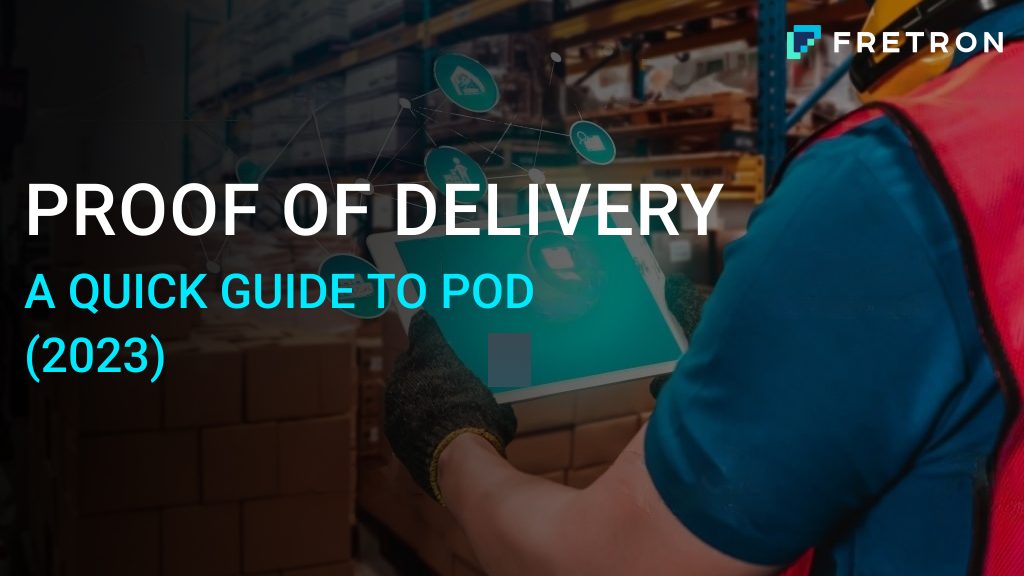Introduction
The supply chain process has evolved over the years with an increased reliance on digital systems. One significant evolution is in the area of Proof of Delivery (POD), especially with the innovation of Electronic Proof of Delivery (ePOD). This article will demystify the importance of Proof of Delivery, the role it plays in supply chain management, and how the electronic version is reshaping business operations worldwide.
Understanding Proof of Delivery (POD)
Proof of Delivery (POD) is an integral component of every delivery process. It is a document that confirms the receipt of goods by the end customer, effectively closing the loop in the delivery cycle. POD includes crucial information such as the recipient's name, delivery address, date of delivery, and signature. As the backbone of efficient logistics and supply chain systems, Proof of Delivery ensures a seamless goods transfer from sender to receiver.
The Emergence of Electronic Proof of Delivery (ePOD)
In this digital era, businesses are leaning towards Electronic Proof of Delivery (ePOD). ePOD is the digital version of the traditional paper-based POD system. It allows companies to capture delivery information electronically, making data accessible and actionable in real-time. The transition from paper POD to ePOD is a significant step towards improved delivery efficiency and customer satisfaction.
Advantages of Electronic Proof of Delivery (ePOD)
EPOD systems offer numerous benefits. They streamline the delivery process, reduce paperwork, improve data accuracy, and promote real-time tracking. By providing instant updates, ePOD enables businesses to tackle delivery disputes swiftly and improve their customer service.
Moreover, ePOD contributes to sustainable business practices. By minimizing paper usage, companies can significantly reduce their carbon footprint, aligning with global sustainability goals.
Integration of ePOD in Supply Chain Management
Electronic Proof of Delivery has become a critical component of modern supply chain management. Its integration offers better control over inventory, boosts delivery accuracy, and enhances customer service. With ePOD, businesses can effectively manage their delivery processes, from warehouse operations to the final delivery point.
Conclusion
In the world of logistics and supply chain management, Proof of Delivery (POD) remains an essential cog. The evolution to Electronic Proof of Delivery (ePOD) is a clear indication of how technology is propelling businesses towards more efficient and sustainable operations. Businesses that adapt to this change will undoubtedly secure a competitive edge.
FAQs OF
Q. What is Proof of Delivery (POD)?
A. Proof of Delivery is a document that confirms the receipt of goods by the end-user. It includes details like the recipient's name, delivery address, date of delivery, and signature.
Q. How does Electronic Proof of Delivery (ePOD) work?
A. ePOD works by capturing delivery information digitally in real-time. It makes data accessible instantly, thus facilitating quick decision-making and improved customer service.
Q. How is ePOD beneficial to businesses?
A. ePOD improves the efficiency of delivery processes, reduces paperwork, enhances data accuracy, promotes real-time tracking, and contributes to sustainability by reducing paper usage.
Q. Why is ePOD essential in supply chain management?
A. ePOD allows businesses to have better control over their inventory, boosts delivery accuracy, and enhances customer service.
Q. How does ePOD improve customer service?
A. By providing real-time updates, ePOD allows businesses to address delivery disputes promptly, leading to improved customer satisfaction.
Q. What does the transition from POD to ePOD signify?
A. The transition from POD to ePOD signifies how technology is advancing businesses towards more efficient, sustainable operations.
Q. How does ePOD contribute to sustainability?
A. ePOD contributes to sustainability by reducing paper usage, hence lowering a business's carbon footprint.

Comments
Post a Comment